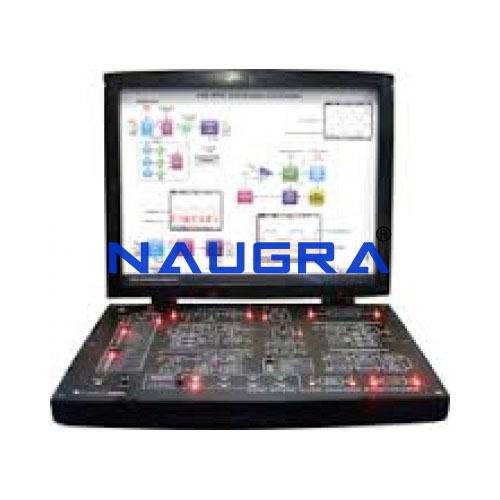- Civil Lab Mechanical Lab Engineering Lab Equipments
- sales@didacticlabequipments.com

CAT NO: DIDACTICECE-LAB-0068
Channel PAM PCM.
PAM-PCM is one of the experiment boards that constitute the
Interactive Practical Electronics System – I.P.E.S.
It consists of a set of components and circuits for performing experiments.
The lessons included in this module can be developed in:
- Standard mode: using the switches of the equipment and
consulting the handbook;
- Computerized mode: the interactive software version of
the handbook - interfaced to the module
via Control Unit , is used. This software inserts circuit
variations and faults automatically enabling the development
of lessons even without teacher’s assistance.
TRAINING PROGRAM
Analog signal sampling: sampling theorem, sampled
signal spectrum, sampling frequency
• Reconstruction of the analog signal starting from
samples
• Pulse modulation:
- PAM (Pulse Amplitude Modulation)
- PPM (Pulse Position Modulation)
- PWM (Pulse Width Modulation)
• Signal digital coding: PCM/DELTA
• Time division multiplexing (TDM) of PAM and PCM signals
• Communication systems using PAM, PPM, PWM, Linear
and Adaptive DELTA, PCM, multi-channel PAM and PCM
• Optimum sampling point in reception
• Effects of the transmission medium and noise
• Voice transmission
• Troubleshooting
TECHNICAL SPECIFICATION:
• Sampling frequency: 8 kHz
• Low-pass filters: active, 4-pole; cut-off frequency 3.4 kHz
• PLL reception clock recovery
• Signal sampler in reception: with adjustment of the
sampling pulse phase
• 2 PCM CODECs with “A” and “μ” coding
• 2 CVSD with syllabic filter: 16- and 32-kHz clock frequency
• Channel simulator: adjustable attenuation and bandwidth
(5/10/20/40/100 kHz)
• Noise generator: adjustable amplitude
• 1-kHz synchronous generator with clocks, for easier wave
form examination
• Microphone and loudspeaker: included
• Fault simulation: Possibility to insert 10 faults
• Test and interconnection points, Ø 2 mm
• Rapid modifications to circuits using jumpers
37-pin connector to the fault insertion unit
• 8-wire connector to the power supply unit
• Printed circuit board with protective treatment and mimic
diagram
• Module equipped with ABS protection on its lower side
